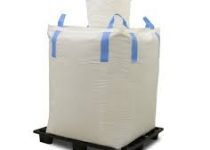Understanding Ferrule Fittings: What They Are and How They Work

Introduction
In many industries, secure connections in piping systems are essential for safely transporting fluids and gases. Ferrule fittings are one type of fitting that ensures tight, leak-proof connections in tubing systems. These fittings are widely used due to their reliability and ease of use, especially in applications where safety is a priority. This blog will explain what ferrule fittings are, how they work, and why they are an excellent choice for many applications.
1. What Are Ferrule Fittings?
Ferrule fittings are small but important components used to connect tubes in a piping system. They are made up of three main parts:
- Body: The main part of the fitting, where the tube is inserted.
- Nut: A threaded part that tightens around the body to secure the tube.
- Ferrules: Metal rings or sleeves that sit between the nut and the tube.
Ferrule fittings are commonly used in industries like oil and gas, chemical processing, and pharmaceuticals. They work well in high-pressure applications and provide a strong, reliable seal that helps prevent leaks.
2. How Do Ferrule Fittings Work?
The key to ferrule fittings lies in how the ferrules work. When the nut is tightened, it presses the ferrules onto the tube. Here’s a step-by-step breakdown of how this process works:
- Step 1: The tube is inserted into the body of the fitting until it reaches a stop point.
- Step 2: The nut is tightened onto the fitting body. As it tightens, the ferrules are pressed down.
- Step 3: The front ferrule compresses against the tube and creates a strong grip, while the back ferrule supports the front ferrule.
- Step 4: Together, the ferrules create a tight seal around the tube, making the connection leak-proof and secure.
This sealing method is effective because it doesn’t require any special tools or welding. Tightening the nut by hand or with a wrench is usually enough to create a secure connection.
3. Advantages of Using Ferrule Fittings
Ferrule fittings offer several benefits that make them popular in a variety of industries:
- Leak-Proof Seal: The ferrules create a tight seal that helps prevent leaks, even under high pressure.
- Easy to Install and Remove: Ferrule fittings do not require complicated tools or welding, making them easy to install and remove.
- Reusability: These fittings can often be reused by simply replacing the ferrules if needed, which helps save costs.
- Resistance to Pressure and Vibration: Ferrule fittings hold up well under pressure and can resist vibrations, making them ideal for harsh environments.
4. Common Applications of Ferrule Fittings
Due to their versatility and reliability, ferrule fittings are widely used in different industries. Here are a few common applications:
- Oil and Gas: Ferrule fittings are often used in pipelines and other high-pressure systems to ensure safe transport of fluids and gases.
- Chemical Processing: These fittings help secure connections in systems that transport chemicals, minimizing the risk of leaks.
- Pharmaceuticals: Ferrule fittings are used to create sanitary connections in equipment that must meet strict cleanliness standards.
- Instrumentation Systems: Ferrule fittings help create tight, precise connections in instrumentation systems, allowing for accurate control and measurement.
Conclusion
Ferrule fittings are an essential part of many piping systems, providing secure and leak-proof connections that are easy to install and remove. Their design, featuring a body, nut, and ferrules, makes them reliable even in high-pressure and high-vibration environments. Whether used in oil and gas, chemical processing, or instrumentation, ferrule fittings offer a simple yet effective solution for safe and durable connections.
--------------------------------
Guestbeat.com Notice!
Audience discretion is needed, Read TOS.
Submit Guest Post / Read Latest / Category List
App & Rate-Us / Subscribe Daily Newsletter (FREE)



